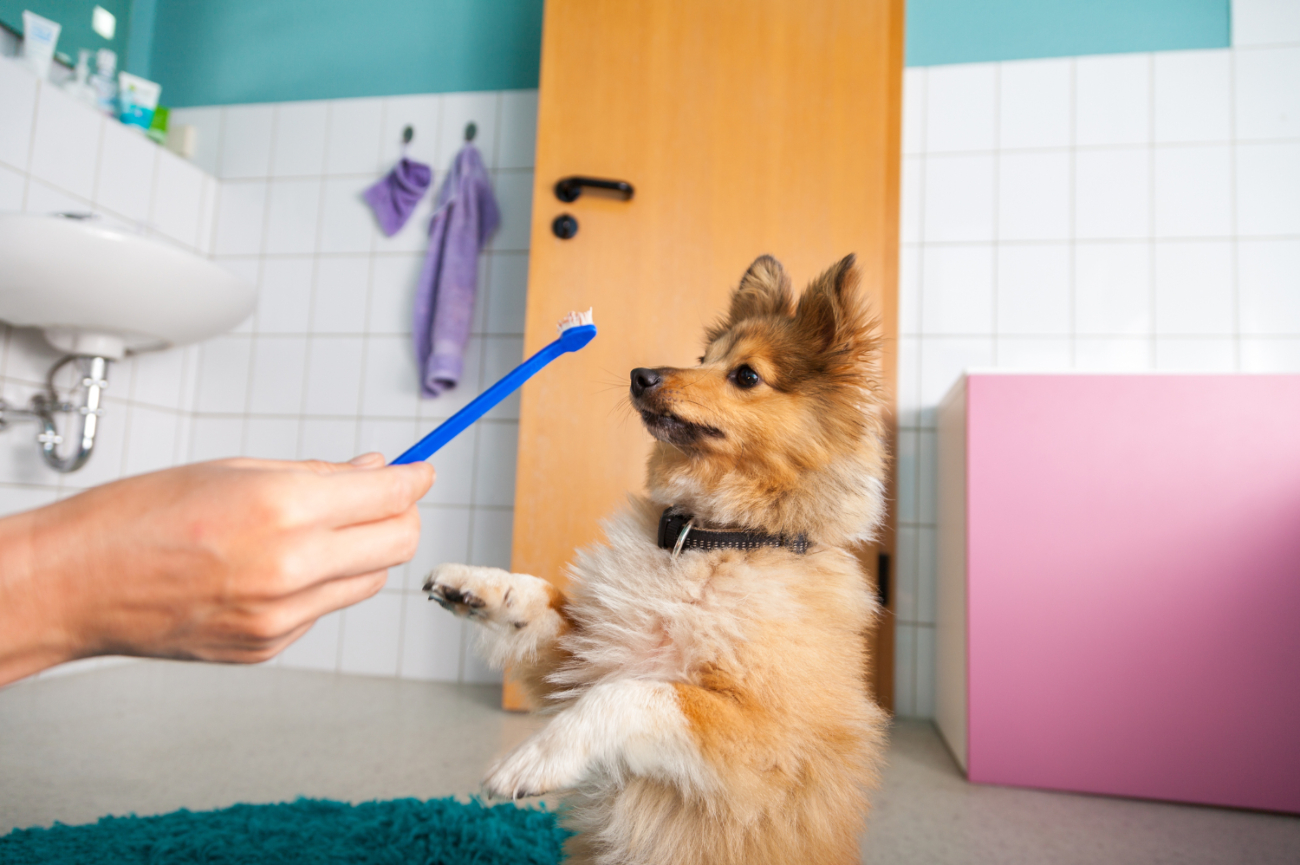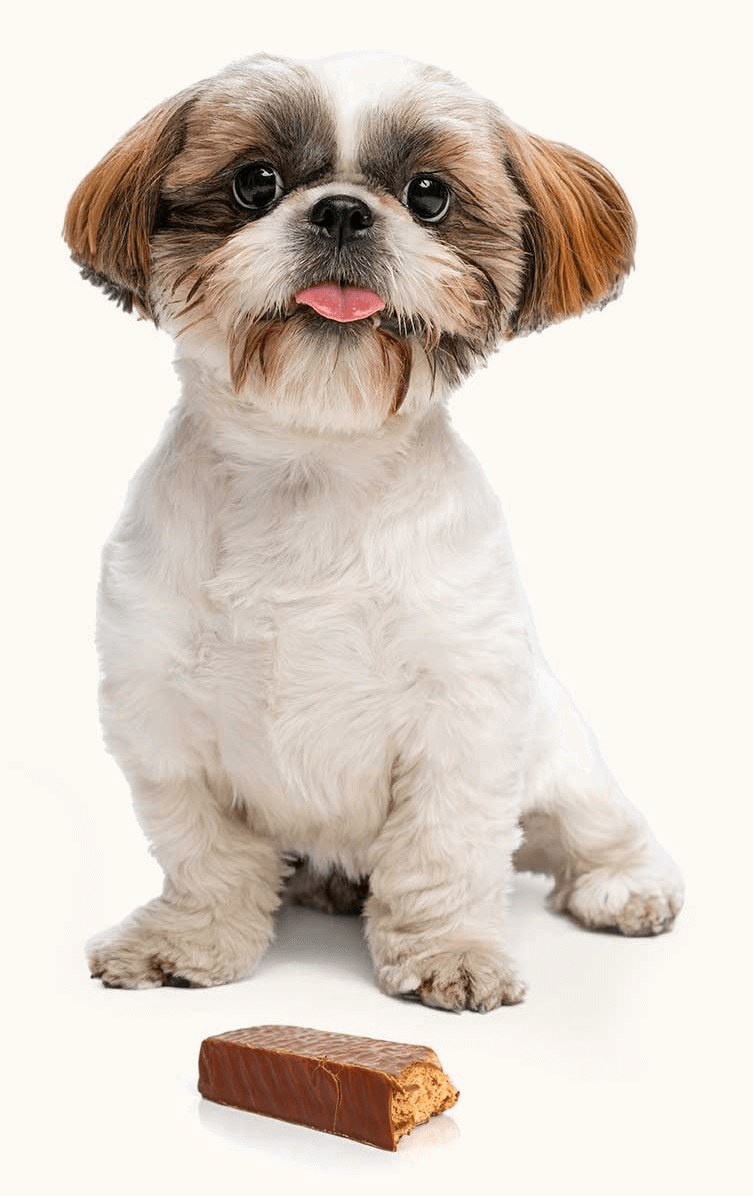Key Takeaways
- Toothbrushes, toothpastes, and gels are dog dental care products.
- Common dental problems in dogs are plaque, tartar, gingivitis, and periodontitis.
- Serious canine dental issues include abscesses and loss of teeth.
- Brush your dog’s teeth daily and reconsider your dog’s diet for dental health.
- Many vets will recommend six-month or annual teeth cleaning appointments for dogs.
Table of Contents
You have a routine to take care of your personal dental hygiene, so why wouldn’t you do the same for your dog? Though it’s obviously easier to stay on top of your own teeth, caring for your dog’s teeth should be top of the list as a pet parent too.
If you don’t manage your dog’s dental care, then you could soon be seeing signs that it’s time to take a trip to the vet. Nobody wants avoidable trips to the vet, but you can help prevent this by following the advice we have below.
Dental Care Products for Dogs
The good news is that taking care of your dog’s teeth is easy with the right products. The right dog food will help keep your pup healthy, along with a good toothbrush and toothpaste to remove as much tartar as possible.
Toothbrushes: Using a toothbrush to brush your dog’s teeth every day will help keep tartar and plaque to a minimum as well as reduce the intensity of undesirable dog breath. When choosing a toothbrush, find one that is specifically designed for dogs with soft bristles, and choose an appropriate size based on the size of your dog.
Toothpaste: Picking a toothpaste for your pup means choosing one that not only gets the job done but also appeals to them; this will make it easier to clean their teeth with as little bother as possible. Consider your dog’s allergies when choosing a flavor.
Never use human toothpaste on dogs. Human toothpastes contain fluoride which the RSPCA has warned is poisonous to dogs. Always stick to a toothpaste that is specially formulated for our canine companions.
Gels: Dog dental gels have made it to the forefront of alternatives to help clean a dog’s teeth. The great thing about dog dental gels is that they are easy to apply and are an effective solution for combating tartar and bad breath.
After reading the label carefully, the only thing you need to bear in mind with dental gels is that your dog can’t have any food or drinks for about half an hour after they’ve had a gel or it won’t be as effective.
Common Canine Dental Problems
Dogs can suffer from a range of issues if they don’t get regular dental care.
- Plaque: Plaque is a soft film of food debris and bacteria that builds up each day by sticking to the surface of your dog’s teeth. Brushing their teeth will help to easily remove plaque if maintained regularly. If not maintained on a regular basis, it will become harder to remove the plaque, putting your dog’s teeth and gums at risk.
- Tartar: When plaque is left on the surfaces of the teeth, the minerals in your dog’s saliva begins to harden the plaque into tartar which firmly attaches to their teeth.
- Gingivitis: As the tartar begins digging into and below the gum tissue, the gums can turn red, causing them to become irritated and inflamed, resulting in gingivitis. When the tartar makes its way into the gum line and creates gingivitis, plaque bacteria can make its way below the gum line which causes the onset of a gum infection.
- Periodontitis: Plaque bacteria existing below the gum line will cause increased damage to the tissue. These bacteria, inflammation, and the resulting tissue damage can arouse your dog’s immune system. The immune system acts to send out white blood cells among other inflammatory chemicals as a form of attack to destroy the bacterial issue. The only problem with this is that the supporting soft and bony tissues of the tooth become damaged in this process. This is known as periodontitis.
- Abscesses: Once periodontitis and gingivitis are present, bacteria then have access to the roots of your dog’s teeth. The root of the tooth can deteriorate, which deprives the root and tooth of its vital blood supply. Affected tissue then dies off and a vast amount of white blood cells rush to the scene causing what we see as pus or an abscess. Osteomyelitis can ensue and surgery is typically required.
- Loss of teeth: When dental problems are at their most advanced, teeth can fall out or need to be removed by a veterinarian. This is because they will be loose from gum deterioration, making it hard for your dog to eat, as well as rendering them in pain a lot of the time too.
General Dental Care Tips
The three main pieces of advice we can give you on general dental care tips are as follows:
Brush daily: Making it a daily activity will help your dog get used to the process, and it will keep them in good oral health.
Diet: Take the time to speak to your vet about what the best diet/food you can use to keep your dog’s teeth in good shape.
Visit the vet: Visiting the vet for your dog’s teeth is just as important as booking your regular dental cleaning appointments. Your vet will probably advise a 6-month or annual tooth cleaning appointment for your dog.
This appointment will be the only real way to fully remove tartar buildup. Just as we cannot fully remove it ourselves, you can’t do it for your dog either. Therefore, do the best you can by brushing regularly and get those sessions booked with the vet to keep your dog as healthy as possible.






